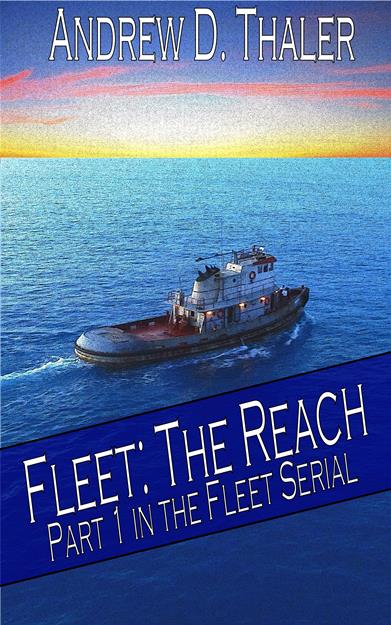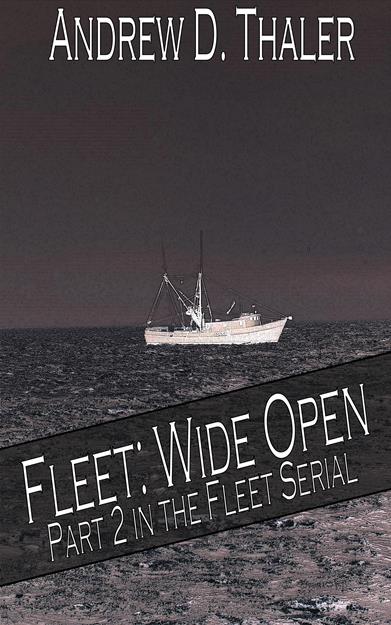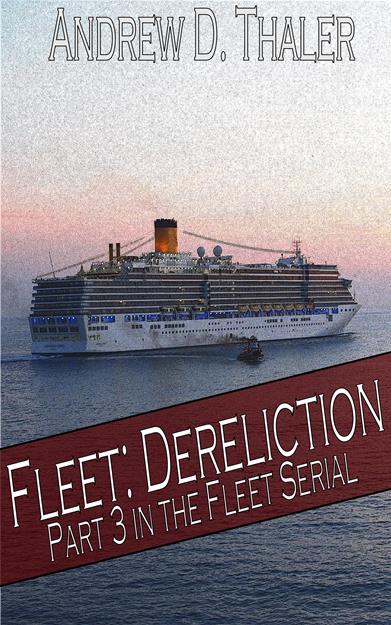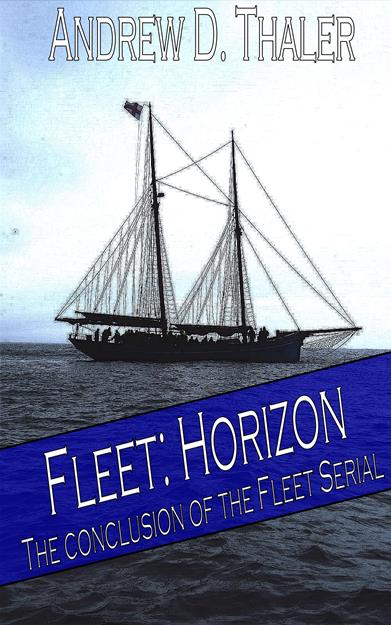We’re approaching the home stretch. Fleet: Horizon, the conclusion to my ongoing science fiction serial novel, premiers on December 2. Each installment features a distinctive cover, featuring one of the ships in the Fleet. The ship on each cover is a real vessel, photographed during one of my many field expeditions. In honor of the completion of Fleet, here are the real stories behind the four vessels featured on the covers.
 Fleet: The Reach features the ship that inspired (loosely) NC-3502-WM. The actual vessel is an ocean tugboat that I encountered in Antigua, at the conclusion of JC82/83 — my research cruise to the Mid-Cayman Spreading Center and tag-along cruise to the seas around Montserrat. The noticeably aging vessel was living out its latter years as a pilot boat, delivering pilots to cruise ships and other large vessels so that they could navigate into Antigua’s port.
Fleet: The Reach features the ship that inspired (loosely) NC-3502-WM. The actual vessel is an ocean tugboat that I encountered in Antigua, at the conclusion of JC82/83 — my research cruise to the Mid-Cayman Spreading Center and tag-along cruise to the seas around Montserrat. The noticeably aging vessel was living out its latter years as a pilot boat, delivering pilots to cruise ships and other large vessels so that they could navigate into Antigua’s port.
Maritime Pilots are an old and honored profession. Many ports are dangerous, with local hazards that shift, sometimes as often as the tide. Because of this, large vessel require a local mariner, someone who knows their waterways, to guide ships into port.
Of course, not all ports require pilots. On our departure from Jamaica, the harbor master merely informed us: “No worries, man, you know the way out.”
 Fleet: Wide Open changes tone, featuring a shrimp boat sailing through the night. This boat, one of the many shrimpers that work around the Carolina Coast, is the inspiration for Miss Amy, the old but tough trawler that serves as the home for our main characters.
Fleet: Wide Open changes tone, featuring a shrimp boat sailing through the night. This boat, one of the many shrimpers that work around the Carolina Coast, is the inspiration for Miss Amy, the old but tough trawler that serves as the home for our main characters.
I’ve always loved the look of small trawlers. They combine the classic design of old, ocean-going, craft with the rough, utilitarian look of a ship the works at sea, not just sails. Other than a tall ship under full press, there are few images that move me quite as much as a small trawler, outriggers extended, nets in the water.
Small shrimp trawlers, those that can be crewed by a handful of sailors, represent freedom, independence, and self-sufficiency in the face of an unyielding ocean.
 Fleet: Dereliction features a cruise ship from the same night in Antigua. You can even see the pilot boat, in the foreground, meeting the ship at sea. This was the only ship I had to alter heavily, stripping any identifiable marking from the vessel. Fleet is not kind to cruise ships, and for good reason.
Fleet: Dereliction features a cruise ship from the same night in Antigua. You can even see the pilot boat, in the foreground, meeting the ship at sea. This was the only ship I had to alter heavily, stripping any identifiable marking from the vessel. Fleet is not kind to cruise ships, and for good reason.
During this research cruise, three separate events were going on, all of which had tremendous influence on Fleet. First, was the ongoing salvage of the Costa Concordia, the worst cruise ship disaster in recent history. The sinking of the Costa Concordia was the event that got me first thinking about what life would be like if we were all forced to live in cruise ships.
Second, was the US Coast Guard hearing regarding the sinking of the HMS Bounty during Hurricane Sandy, which many of us were following religiously, through the excellent reporting by Mark Vittone on gCaptain. The Bounty sinking was particularly poignant for me. I lived in Beaufort, near where she went down, and I still vividly remember seeing the Coast Guard helicopter speeding out to find her early that morning. The connections between climate change, maritime disasters, and superstorms that eventually lead to Fleet emerged from that tragedy.
Finally, during this research expedition, the Carnival Cruise Ship Triumph lost its engines and was set adrift in the Gulf of Mexico, not far from where we were. The poop-cruise, was magnified by limited rations and a failing water treatment system, solidified my cynicism regarding cruise ships, and, more than anything else, helped define exactly how Oasis Princess ended in disaster.
Now we come to the final installment, and the grand reveal for the ultimate cover of Fleet: Horizon:
Fleet: Horizon, debuting on December 2, 2013, features one of my all-time favorite vessels — Norðlýsið, a two-masted sailboat based in Torshavn, Faroe Islands. On our honeymoon, my wife and I spent one very chilly day sailing around Nolsoy aboard Norðlýsið and listening to the world renowned “concert in the caves” — an experience not to be missed. It should surprise no one that Melville is clearly inspired by Norðlýsið.
Ships have had a profound influence in my life — from my first research cruise aboard the Nancy Foster to the joy and frustration of fixing Black Smoker, my notoriously cantankerous personal project — ships, and a life on the water, have shaped the way I look at the world. Fleet is, in part, and expression of my desire for a life at sea.
The first three installments of Fleet are available in Amazon’s Kindle Store:
You can subscribe to my Amazon Author’s page for updates on the Fleet series and, of course, check back here, at Southern Fried Science, for bonus material from the fleet.
For those who aren’t into the whole serialized story thing, or who want a pulp-a-and glue copy of the book, there will be an omnibus edition, complete with all the SFS bonus material, released for kindle and hardcopy in early December.
